Eduard P-39N Airacobra, 1/48. 'Lend-lease Ace Maker'.
I got this kit to be a bit of a quicker build and recover some mojo, and it's generally been a fun build. Whilst the kit is for American P-39Qs, the Eduard set comes with the parts for any of the versions. Foxbot and Montex was used to turn it into something Soviet.
Some History
First flying in 1938 and being introduced into service in 1941, the P-39 was one of the Pre-War aircraft available to the USAAF once they entered the war. The P-39s first operational service was with the British however, whom first received their first Airacobra Mk.Ia (also known as the P-400) in August 1941. The Airacobra in a word could be described as 'disappointing', performance figures given to the British were markedly higher than what was achieved in service, for example a speed of 394mph was expected but the combat loaded aircraft achieved only 359. The RAF went on one combat operation with the type in October, before going for further training over the winter. Along with these performance issues, as well as the poor high altitude capabilities, long take off run, as well as a general distrust, 601 squadron switched the Airacobra out for the Spitfire.
Over in the Pacific the story isn't much better. The poor high altitude performance and short range caused issues for the aircraft. The Zero simply had better agility, high alt performance, and range, with reports indicating the Zero was capable of similar speeds in combat to the early P-39 with far better acceleration. Furthermore poor mission planning resulting in P-39s often ending up in interception or high cover caused further issues, and the ever present issue of malaria on the pacific islands definitely didn't contribute to the pilot's capabilites.
When the Soviets got the Airacobra however, many of the planes issues could be solved. The flat land of the Soviet Union allowed quick airstrips to be built near to the front, should the front line move it wasn't difficult to make another airstrip in the many flat fields, this meant the range wasn't an issue. With both sides making use of this as well as the ever present ground attack aircraft, air combat was low altitude where the P-39 could excel. Speed issues were largely fixed for a few reasons, firstly the majority of the P-39s the Russians received were the later variants with better engines and propellers. On top of this one issue with the Allison engine in the early war was due to very conservative engine manuals intending for a long peace-time lifespan, but tinkering by both American and Soviet engineers proved the engine could be used safely with higher manifold pressures resulting in greater power and this was eventually adopted official manuals.
Surprisingly despite its reputation, the P-39 actually had very favourable performance to the Bf109G. The late version P-39Q actually offered a greater turn rate and higher top speed below 11,000ft than even the Bf109G-14. Combine this with the features of an American aircraft such as good radios, instrumentation, and cockpit heaters, it's not surprising that the Soviets had a fond feeling for the machine. All in all 4,719 Airacobras were sent to Russia, ranging from the P-400 intended for the RAF all the way to the final version of the P-39Q, but the N and Q were most common. 1,030 of the P-39s would be destroyed during the war by all means, with the type remaining in service until 1949.
This Particular Aircraft
As model depicts an aircraft that was flown by Grigory Rechkalov whom was the second highest allied/VVS ace of the war with 61 kills plus 4 shared. This airframe was seemingly used for a very long time, possibly from May 1943 all the way up until early 1945. One issue with the P-39 was that the fuselage could deform under intense maneuvers at high speed. In memoirs by Konstantin Sukhov he mentions when another Soviet ace, Aleksandr Klubov, encountered this issue.
"Alexander Ivanovich came. Klubov's Aircraft mechanic Gregory Shevchuk reported him:
- Fighter is deformed, the fuselage is formed like "accordion", tip bent, torn flap holes ...
Klubov, in a wet tunic with salt stains, jumped off the plane and also surprisingly stares at his plane: - Wow, how twisted is overseas technology! I did not think that the plane will fail... said Klubov with smile.
Now it was clear why this type looked strangely - fuselage was deformed, antenna gone, the transmitter has moved from its place, the hellish congestion even cut the bolts..."
Sukhov also notes;
"Rechkalov was a bit unlucky. He hit "Ju-87", but when flying away from attacked plane, he pulled on the stick too much, very sharply and his "Cobra" deformed." As such this P-39 was repaired, probably with the majority of the tail being simply removed from another aircraft, and was given strengthening braces. The aircraft is also clearly painted in another colour here, Soviet AMT-4. Regarding roundels most Soviet bound aircraft were shipped with American markings and repainted in Russia resulting in a generally sloppy looking marking with many variations. Sometimes the blue of the USAAF markings would remain, sometimes it was overpainted with AMT-4, regardless it seems probable that the aircraft had blue circles (based on photos of the upper wing) originally and evidence of the USAAF fuselage star was later completely covered over during repainting after repairs.
Sometime after these repairs Alexsandr Pokryshkin received his third Hero of the Soviet Union award, interestingly he was photographed in front of this aircraft rather than his own, making this Airacobra certainly one of the more photographed Soviet machines.
The Build
This kit is Eduard's 1/48, after two amazing kits coming out this year in the form of the A6M and F4F I've certainly enjoyed Eduard's products in 2022. I did however forget that old Eduard offered great details but generally mediocre fit. Whilst there were no major issues with the build, it is an Eduard kit from 2000 so gaps in the fuselage and wing root needed to be fixed, instructions were pretty meh, and I found the clear parts to be pretty poor fitting. These aren't major issues though, but a good reminder to check when a kit was first tooled so to temper your expectations.
Speaking of the clear parts it seems to me that the model was certainly designed with the idea that the cockpit doors would be open as the really didn't fit well against either the fuselage or the canopy. A lot of sanding was done just to try and get them more flush with the fuselage, resulting in some details being removed and needing rescribing.
Painting was a quick affair using MRP paints, I didn't bring out all the bells and whistles and spent a very short time on the paint phase but it came out better than I'd expected. Initially the contrast between the fading was too much but this toned down way at the end with no issues. Walkway lines and such were painted, normally I prefer to paint anti-slip surfaces at the very end of the build in underthinned paint to make them matt with a bit of fine texture, but due to the red walkway lines depending on the shape of the anti-slip to be correct I ended up doing them both together early on.
Decals and stencils were from Foxbot, which generally seem to be good quality and quite thin, but the stars were painted with Montex masks. It's worth noting the fuselage star should be a tad larger, but the decals and fuselage masks were too small and the wing masks were too big.
Overall it was a decent build, honestly I wanted something carefree to get some mojo back and should have gone with something like a Tamiya P-51, but the issues weren't major with this kit and the end result I'm happy with. Painting was the right amount of simple and fun which was appreciated, without the need to do complex masking aside from the walkways which isn't really a hassle in my eyes anyways. It is always nice to have the opportunity to go 'eh, Soviet repairs' as an excuse if any problems did pop up and indeed a mix of AMT-4 and Olive Drab was used in a few areas where scratches or paint splotches found their way to the model.
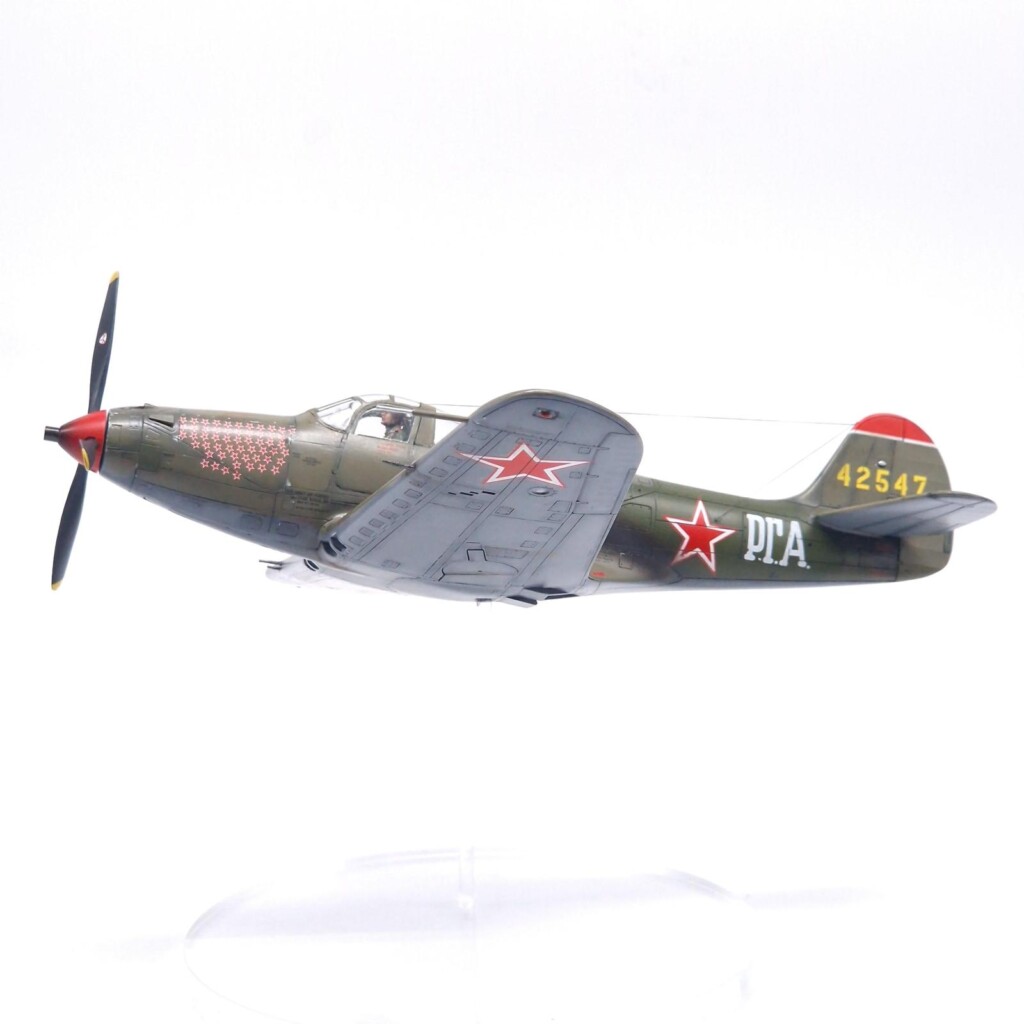
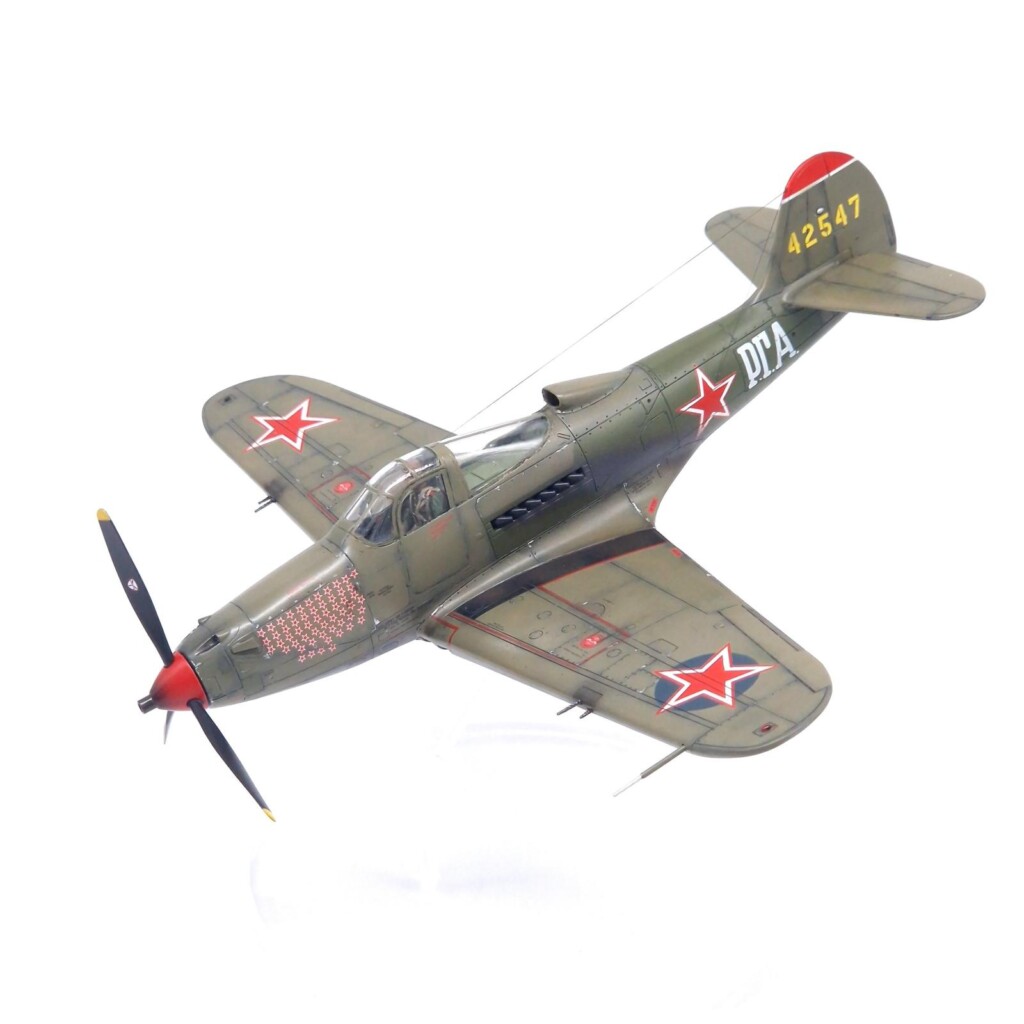
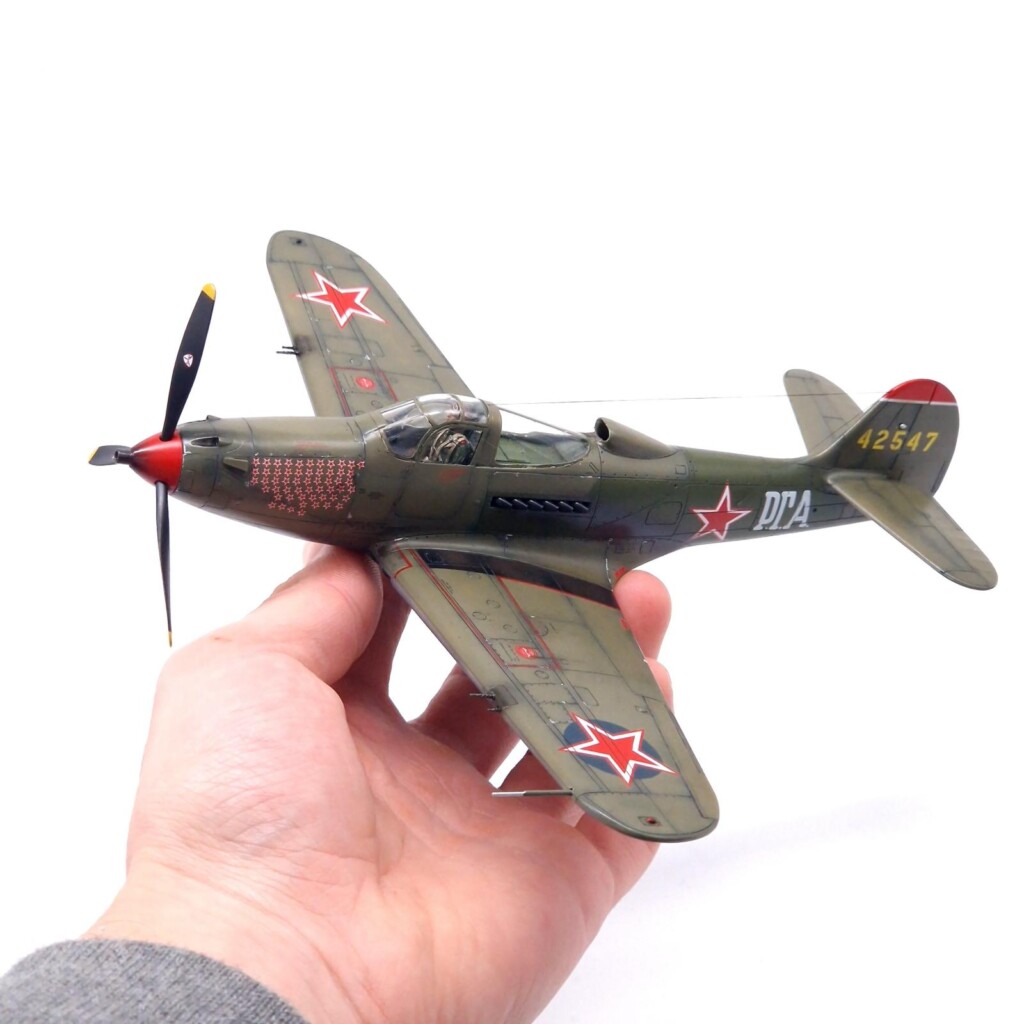
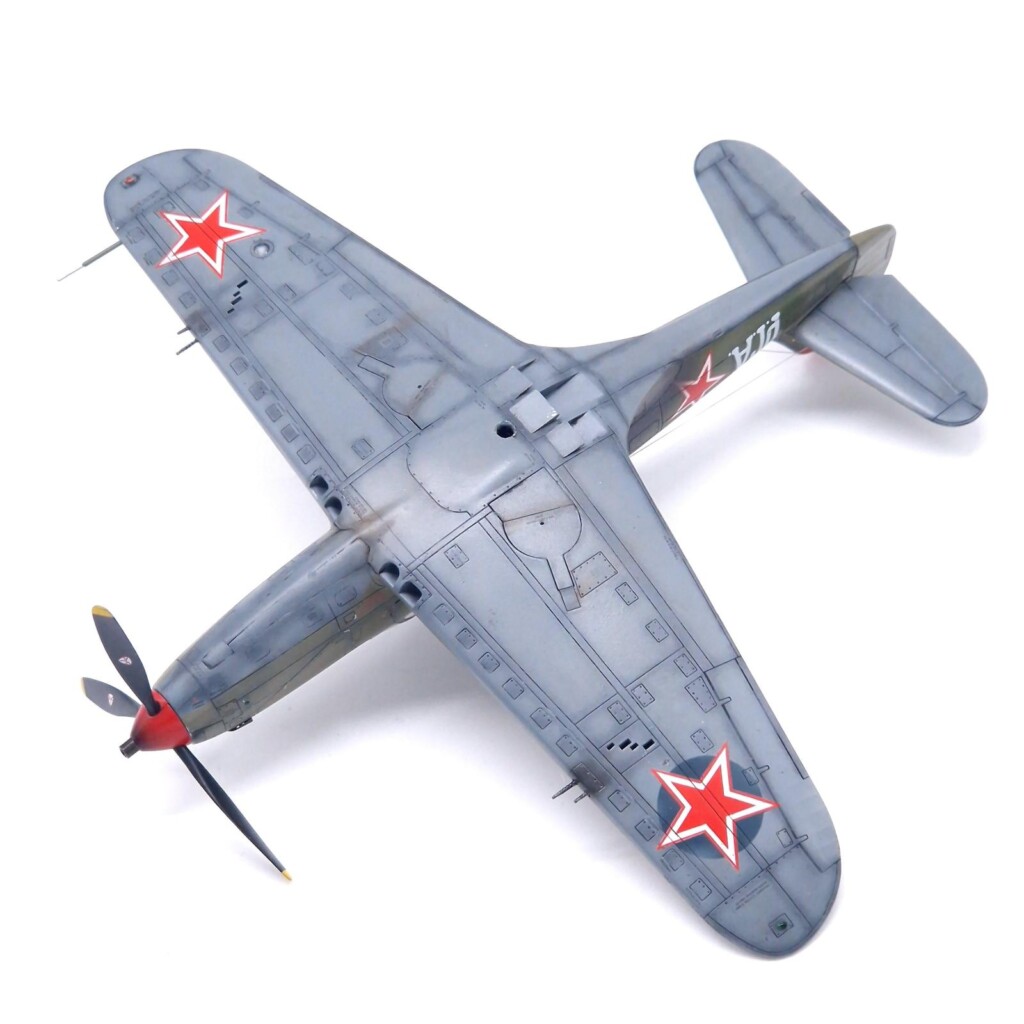
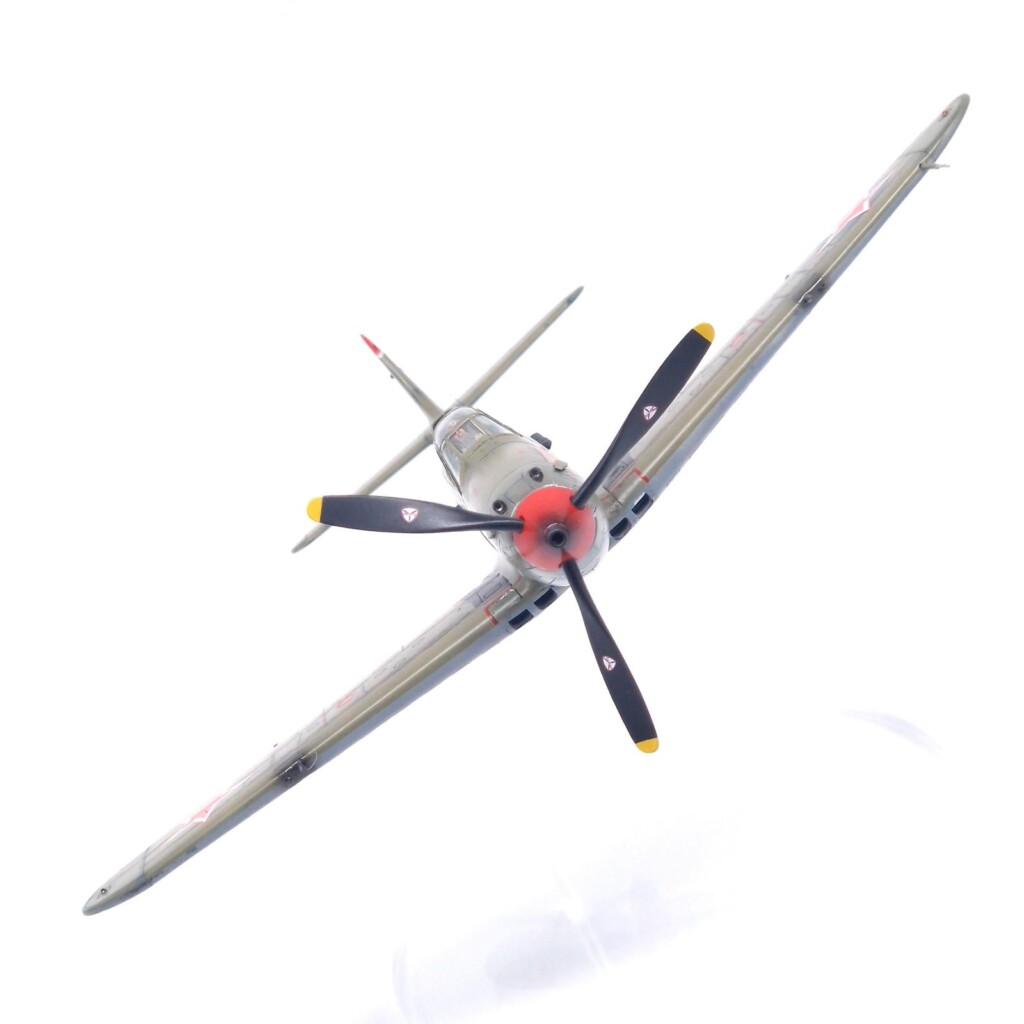
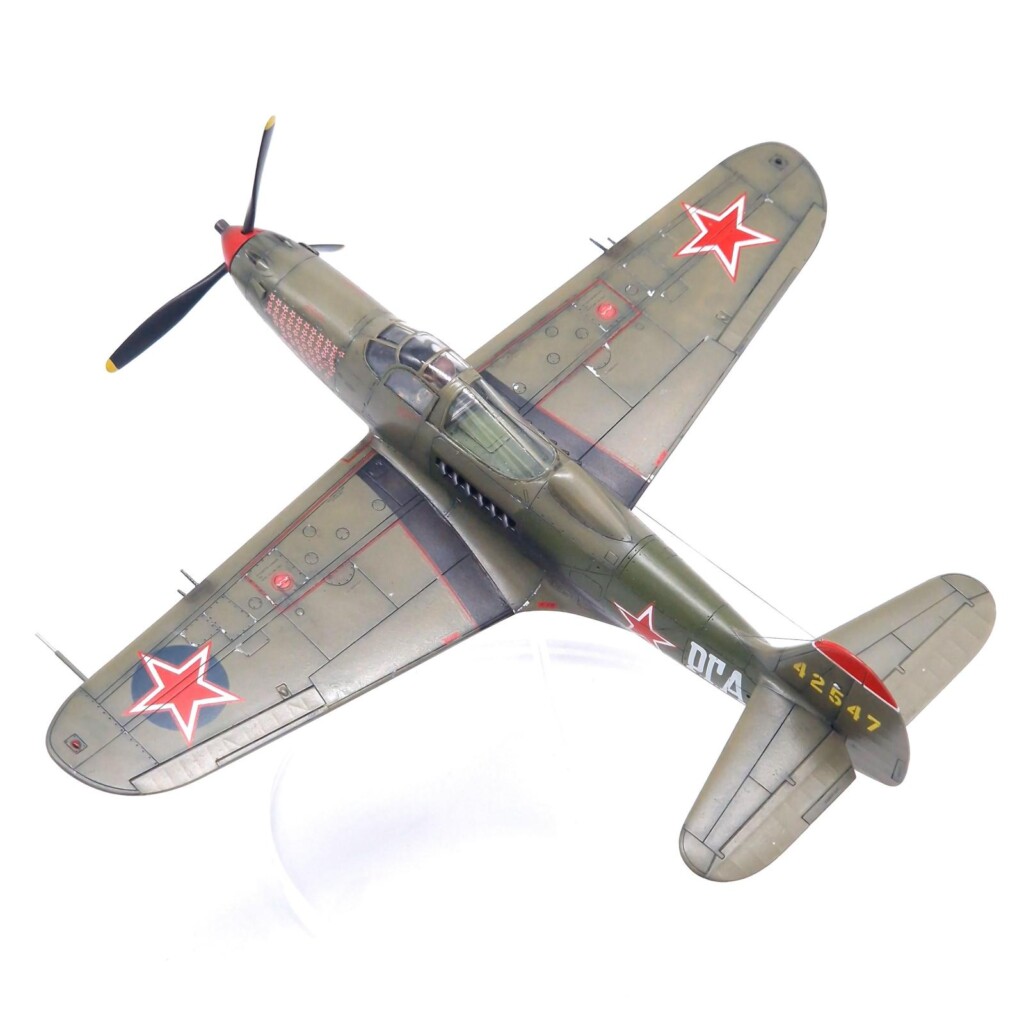
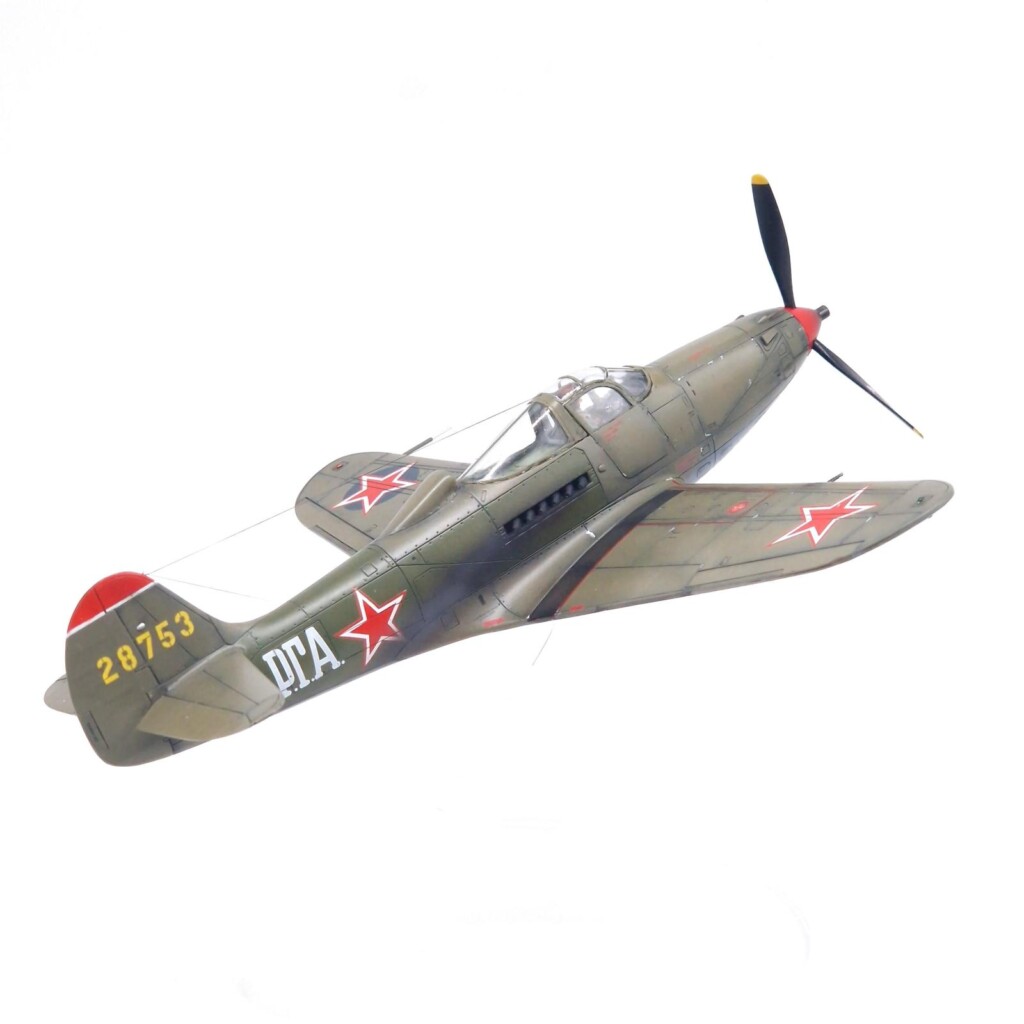
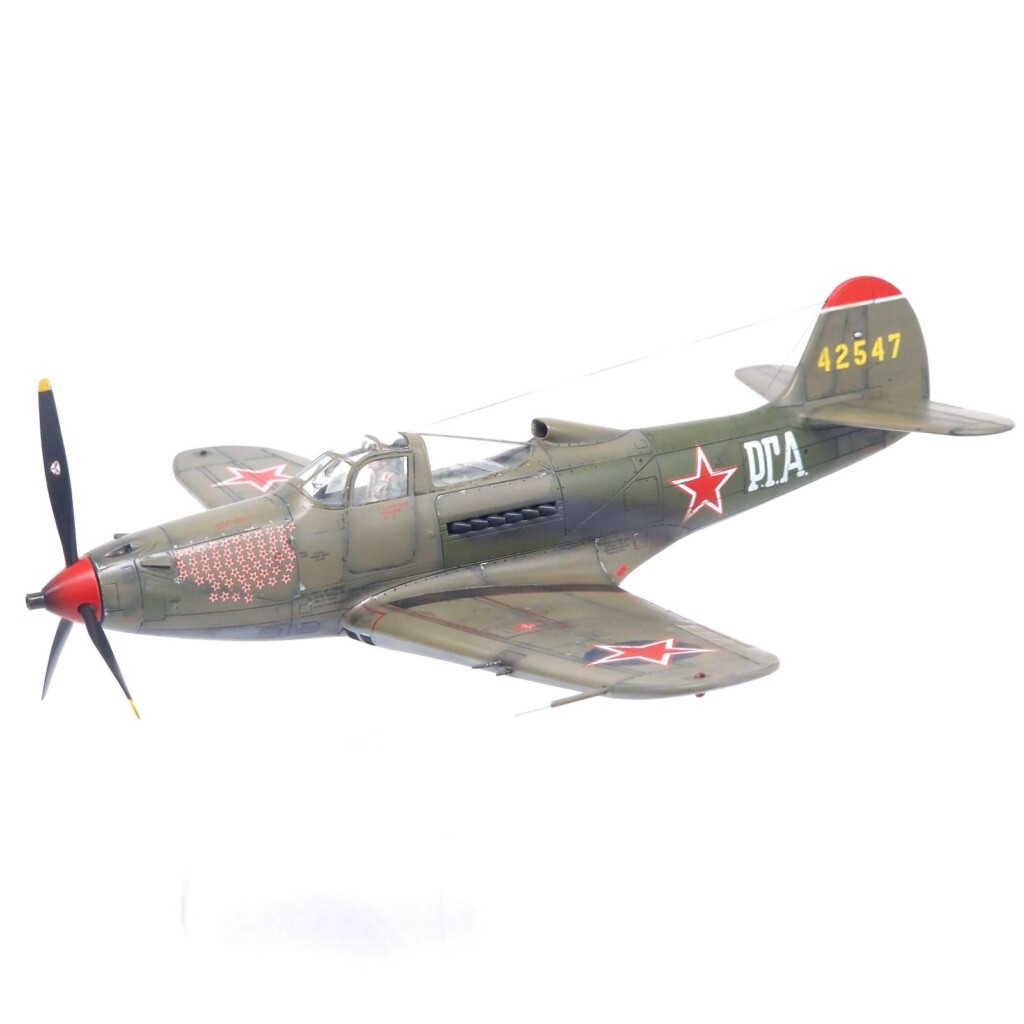
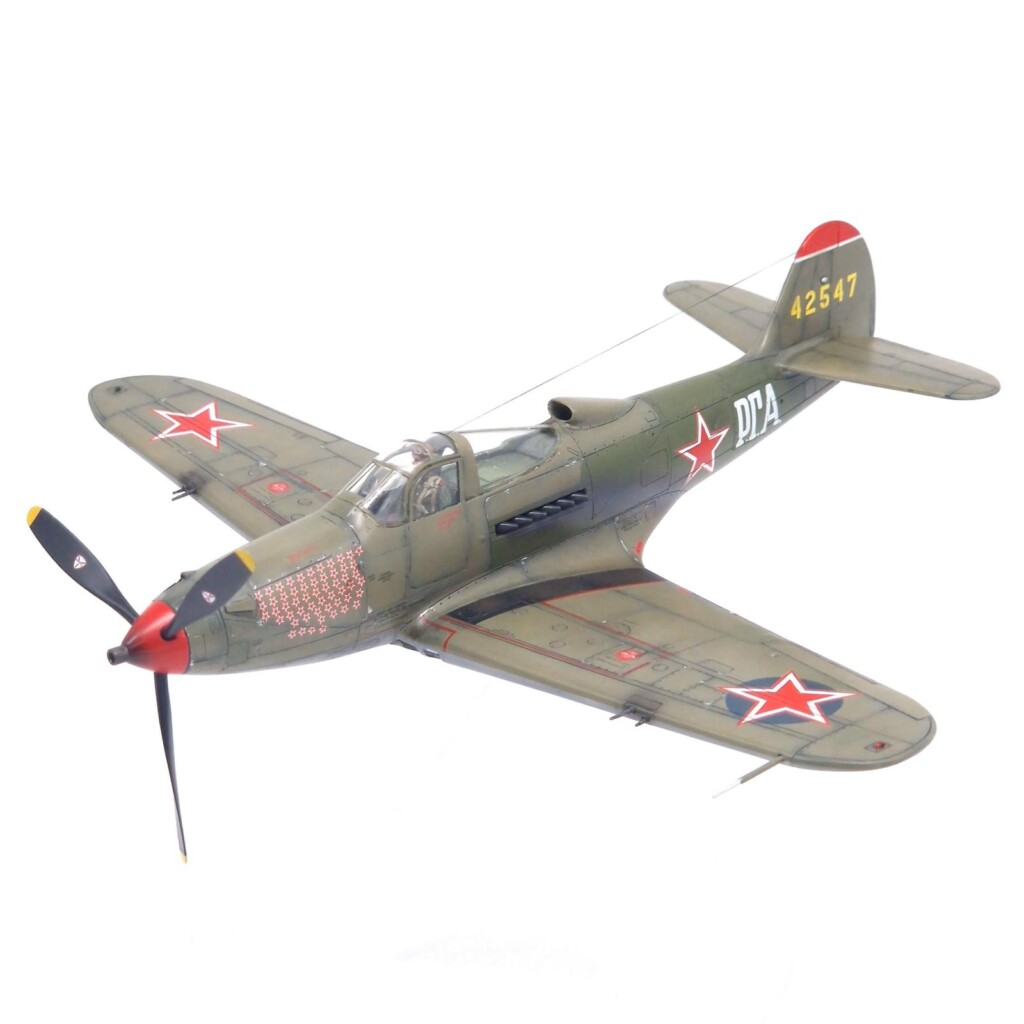
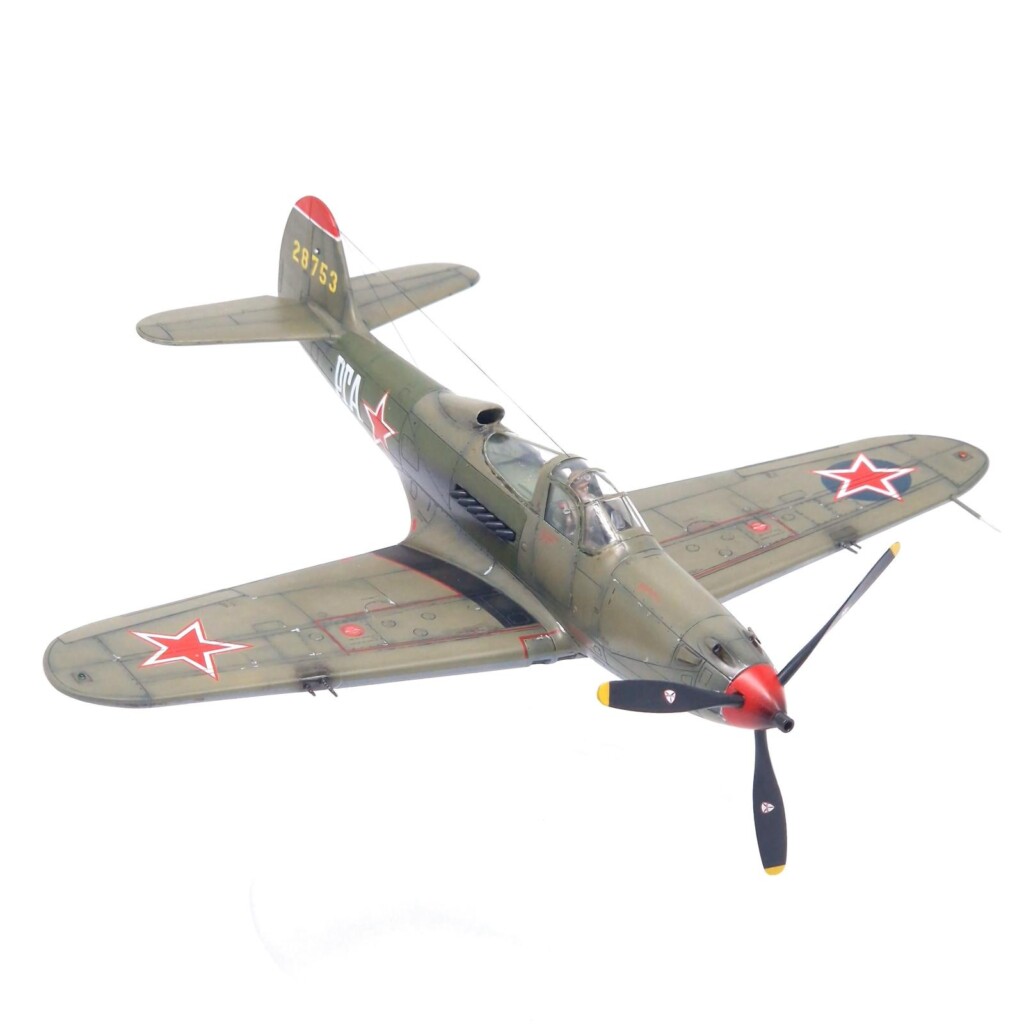
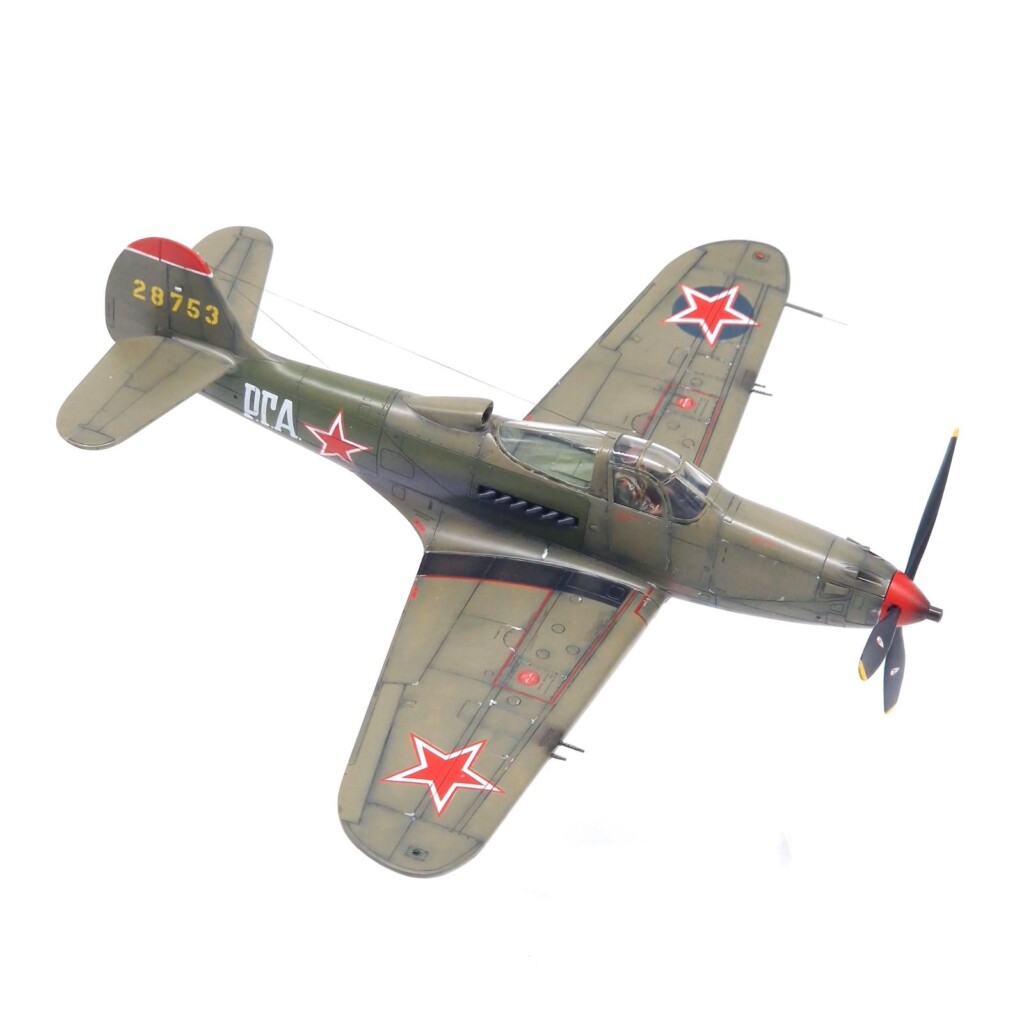
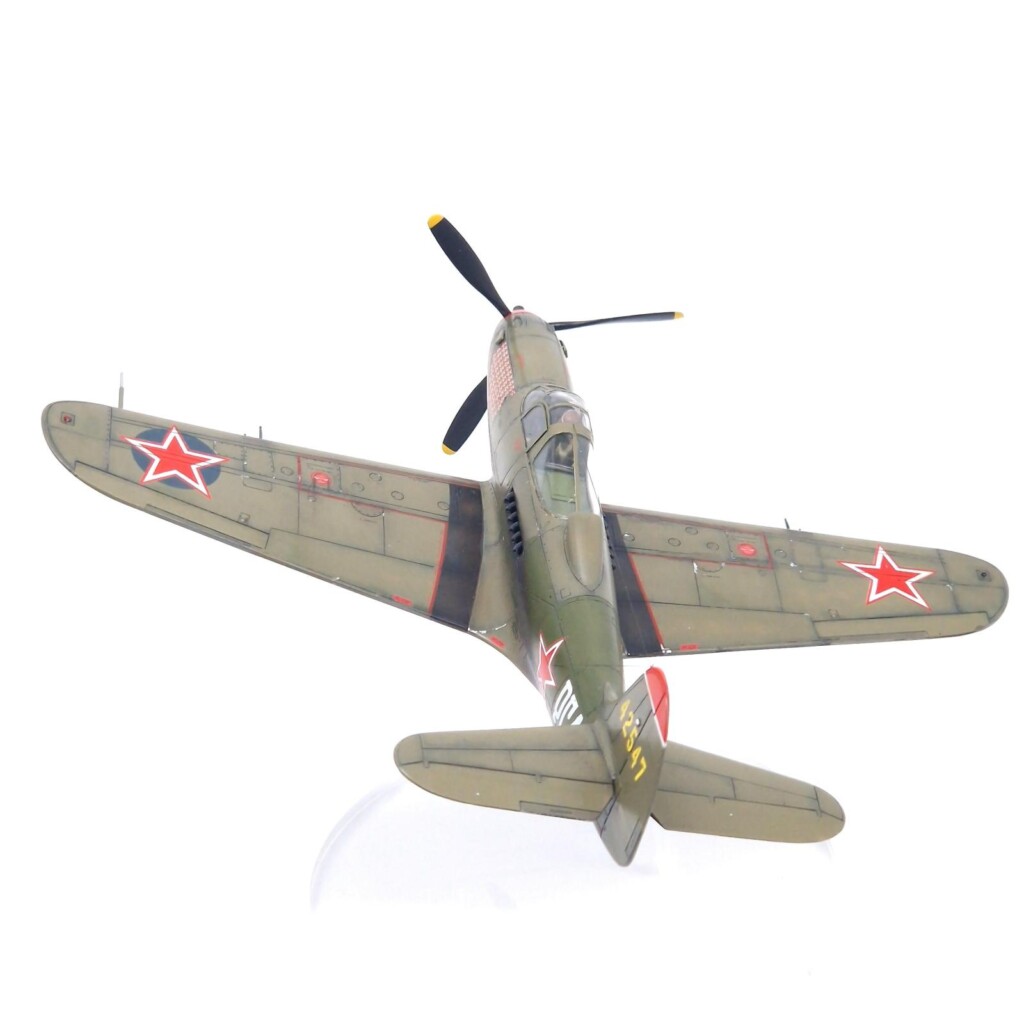
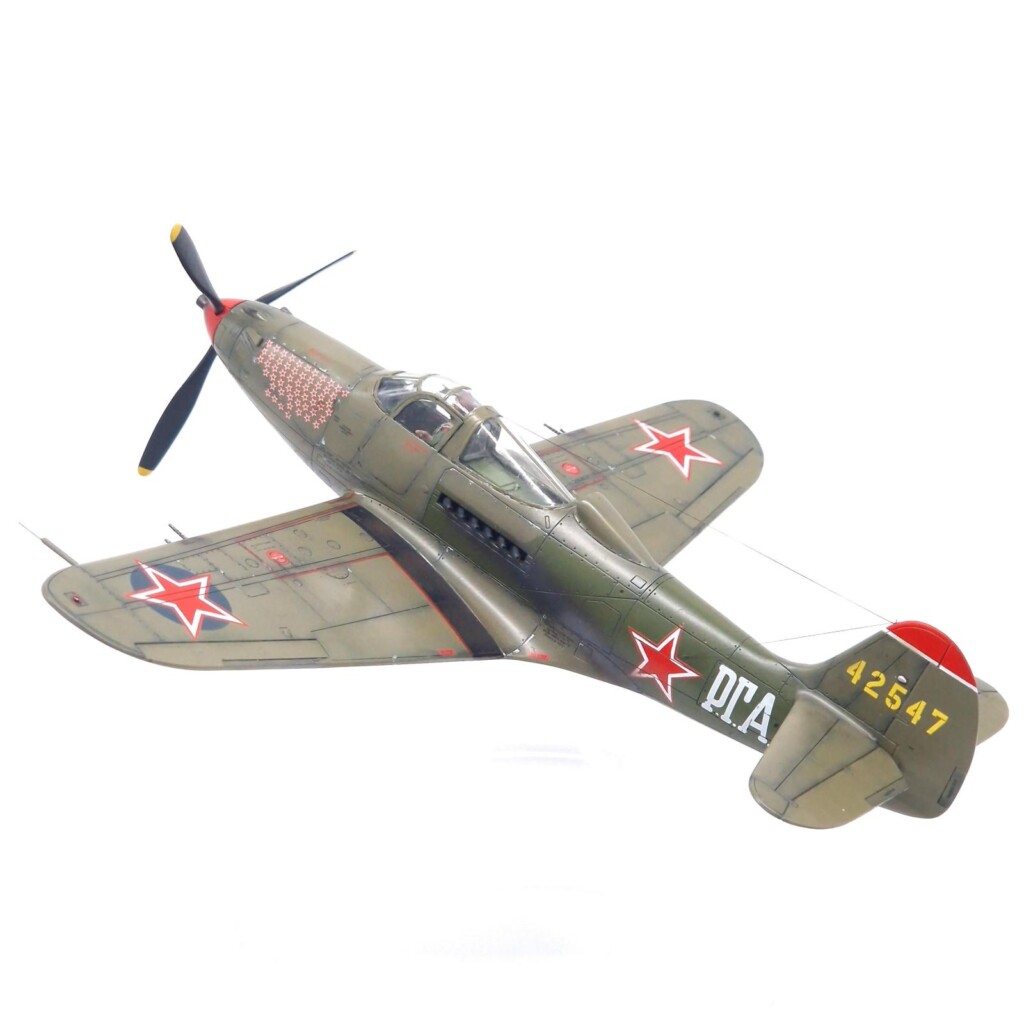
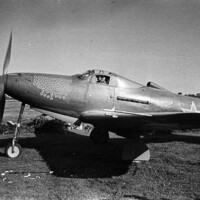
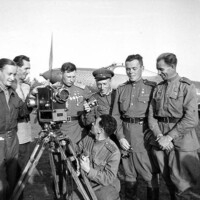
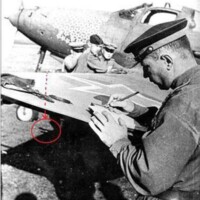
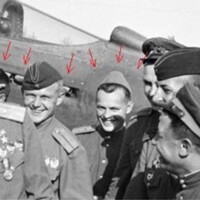
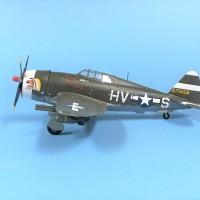
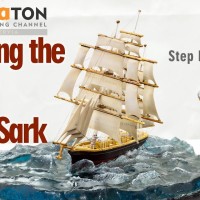
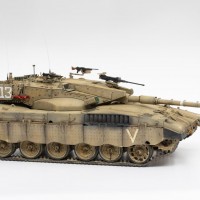
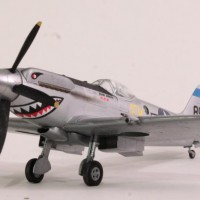
This P-39 turned out excellently ! Interesting history about Soviet use of this aircraft.
Thank you! I definitely find the use of these lend-lease aircraft interesting, especially as aircraft the West were quite fond of were often not well received by the Soviets
Being a fun build is what mostly counts, Harvey @scalerambush
And achieving such excellent results is even increasing the fun factor.
Great background article as well.
Well done.
Thank you!
Great build, great read, and great photos. If you were looking for some mojo, I think it found you!
Seems like a lot of work for a fun build to me, Harvey, but it turned out great, and you enjoyed it, what more can you ask for?
A very good article, both the pilot and his plane as the build itself. Very nice model indeed, the inflight shots are wonderful
Amazing job, Harvey! Excellent article too!
Many thanks!
A fine looking Airacobra! And an interesting story behind it.
Nice work Harvey. That kit is as under-rated as the airplane it depicts.
Interestingly, Chuck Yeager, who certainly had his pick of high-performance aircraft to fly, told me in an inteveriew and repeated it many times elsewhere, that the P-39 was his favorite airplane for "fun flying," but only "if you stayed below 10,000 feet." He credits all the time he spent spinning the airplane to learn how to get out of one (the P-39 was notorious for getting in a spin very easily) with giving him the know-how to "save my life" when it came to the X-1A and the supersonic tumble.
Checking the records, if Rechkalov is credited with the 5 shared victories the Soviets recognized, he is one ahead of Kozhedub, though all of his were solo credits.
Again, nice work!
Thank you! Very interesting with that, on somewhat similar veins Eric 'Winkle' Brown was also quite fond of the P-39/P-400 and used it as a personal mount for a good few years, and of course put it down on a carrier deck for the first tricycle carrier landing. I believe he finally got rid of it in 1946 after a Bell test pilot flew it and was very shaken by how much the aircraft had deteriorated and recommended it was scrapped.
Regarding kill credits I've seen a few different ones noted, I wonder how much the actual amount was. There certainly seems to be a lot of wildly different claims with the Soviets (and Japanese) persumably due to the lack of gun cameras and such/
fabulous P-39! Top notch result and paintwork
Great stuff Harvey, I enjoyed the article and the model.
Nicely done, excellent narrative.
Well done Harvey, one of my favorite A/C and one that the Soviets' put to great use. One American pilot, 2Lt William Fiedler, was the only American to become an ace flying the P-39. Unfortunately, he was killed when a P-38 lost an engine on take off and slammed into his taxing P-39. Build a Monogram P-39 depicting this A/C as well as his story.
Nice P-39, Harvey (@scalerambush). It looks really cool with the gear up. Finish and weathering are well done. I am glad to hear that this kit has the extra parts to do other versions. I got this kit to build an earlier model that was in the Aleutians, so I hopefully won't need to fabricate anything for an earlier version.
Thank you and no problem!
A nice thing with Eduard is all their instructions are easily findable on their site, so I ended up loading up the instructions for their 'Bella' set and following those to make sure I used the right parts for this version, so I'm sure you can do something similar for your Cobra
An excellent-looking Aircobra - I always thought the 'cobras were some of the more lethal-looking airframes!